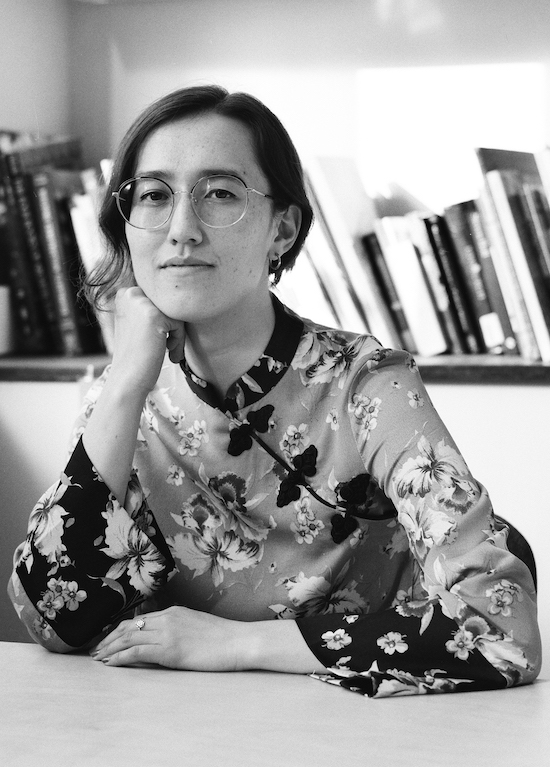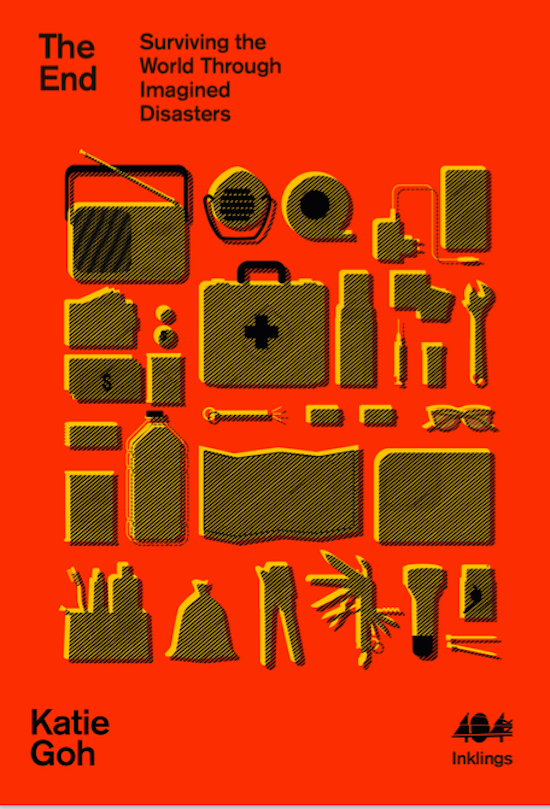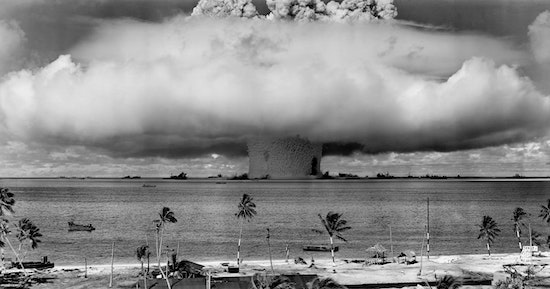The first time the world ended, I was six years old. People were partying like it was 1999 as news anchors and doomsayers prophesied whether or not a computer glitch would cause an apocalypse to herald in the new millennium. The problem – given the numeronym, Y2K (short for year 2000) – was that computer programs might not be able to read dates further than 1999. It was hypothesised that calendar time could roll backwards, like a taxi meter, to 1900, resulting in crashed planes, banking systems and electrical grids. A Y2K software outage had been deliberated as early as the 1950s, but largely ignored until 1999 arrived. Then mass hysteria broke out. Countries established Y2K task forces and fundamentalist religious leaders like televangelist Jerry Lamon Falwell Sr. decreed that a millennium apocalypse was “God’s instrument to shake this nation, to humble this nation”. Some panicked, some found God, but most resigned themselves to destiny and kept partying. “What are we doing on New Years Eve? Well, I’m going to be hiding somewhere,” Backstreet Boys member Nick Carter quipped nervously on MTV.
It turns out the world didn’t end on the first day of the year 2000. Computers ticked over into the new calendar year, elevators kept ascending and a pin was put in the apocalypse. I was too young to remember much of Y2K – my childhood New Year’s Eves all blur together in my memory as a rush of my parents’ friends’ faces, fireworks and Christmas lights – but I can remember with crystalline clarity the next time the world ended.
Twelve years after Y2K, another apocalypse was foretold but, rather than technology, this Armageddon was ancient history. A New Age interpretation of a Mayan calendar that ended on 21 December 2012 marked the day the Earth would undergo a transformation which, depending on your doomsayer, could be a rapture, Earth colliding with a mythical planet called Nibiru, or freak weather. A minor eschatological conspiracy theory was whipped into a frenzy of apocalyptic prophesying by the internet, religious zealots and Hollywood (2012, the disaster movie starring John Cusack, was released in 2009). One in seven people were polled as believing the world would end on 21 December 2012 and I was, depending on the day, maybe one of them. A teenager with an overactive imagination, I scoffed at the idea in conversation and spent my nights reading blogs on the elaborate mathematics of Mayan calendars. On the date itself, I took some relief that mass catastrophe hadn’t been reported by New Zealanders, who surely would have dipped into the apocalypse before the rest of the world, but I still waited up until midnight GMT, incessantly lighting up my Baby-G watch, before concluding that the end was, in fact, not nigh.
The next day NASA published an article, titled ‘Why the World Didn’t End’, explaining with the patience of a high school science teacher that the apocalypse can’t just be speculated into existence by anxiety-ridden bloggers. Bit cowardly, I thought while reading it, waiting until the apocalypse doesn’t happen to publish this.

In the long stream of history, Y2K and 2012 are hardly special occurrences. Look back ten years or a hundred or a thousand and you’ll find the apocalypse. The end of the world has been happening, and subsequently not happening, since people could make shit up. Take the Bible, the original Reddit thread, which is riddled with Armageddon. Plagues, floods, serpents of fire and raining brimstone all feature as divine retribution in the Old and New Testaments, but it’s the Book of Revelation, the Bible’s concluding book, where things take an especially apocalyptic turn. Revelation’s author, John, outlines both a literal and an allegorical vision of a future rapture, when God will make the world anew after servants of evil persecute the faithful. Four horsemen of the apocalypse, prophesises John, will bring disaster: plagues, famines and wars that will kill off a third of the world’s population. When all hope seems lost, God’s forces will return to destroy the evil and deliver a brave new world.
The Book of Revelation was written during a time of war and natural disaster: its author, John, is thought to have been a Jewish refugee who fled Jerusalem after an army of Romans decimated the city. Written sixty years after Jesus’s death and a decade after the eruption of Mount Vesuvius, John lived in apocalyptic times. Revelation is a piece of political writing: a nightmarish howl for hope in a hopeless time. The Biblical book’s narrative arc – disaster followed by redemption – has cemented itself as the prototypical narrative of disaster fiction and Revelation’s legacy lives on as the most influential apocalyptic tale in Christian and, by extension, western culture. Two thousand years after it was written, John’s archetype prevails in our fictitious visions of the end of the world. It’s there in the technological anxieties of Victorian Britain’s science fiction novelists, in the environmental disaster movies of the 2000s and in our 2012 (mis)interpretation of a Mayan calendar that followed the – then – worst recession since the 1970s.
During times of social upheaval, apocalyptic tales and dystopian visions become manifestations of contemporary anxieties, from H.G. Wells’s alien invasion tale of colonial guilt, War of the Worlds, to Armageddon’s pre-9/11 display of American bravado, to Suzanne Collins’s widely popular The Hunger Games trilogy, published as masses of protestors took to the streets, demonstrating for civil rights, fairer economic structures and free speech across the world, in the USA, Hong Kong, Britain, India, Greece, Egypt, Libya and Ireland.

The end of the world as we imagine it has always been political, and intrinsically connected to the world in which we live in, because art has always been political. The popularity of Hollywood superhero movies after 9/11 has as much to do with American terrorism anxieties as it has with the average cinemagoer’s love of big, loud explosions. These disaster narratives of paranoia, self-destruction and rebirth have always fascinated me. An overactive neurological chemical concoction of anxiety, depression and obsessiveness has led to a personal fixation with the end of the world, sparked as a child during a history class when I learned about the nuclear bombings of Hiroshima and Nagasaki, Japanese cities annihilated as collateral damage during World War II. The heinous ethics of that war crime resulted in years of being haunted by a recurring nightmare. In it, I’m forced to walk along a pavement for eternity, side-stepping cracks in the cement because, if I stand on them, I’ll detonate a nuclear explosion. I would wake up coated in sweat after I stepped on one of those cracks, each a miniature abyss, racked with guilt at my compliance in the end of the world.
The word apocalypse has roots in ancient Greek, with apo (“o”) and kalýptein (“cover”) combining to form apokálypsis, meaning to uncover or reveal. The destructive connotations of apocalypse are more modern; in Middle English the word refers instead to a vision or hallucination. These two historic definitions – a vision that reveals – is why I believe we, collectively, are drawn to the apocalypse, in fiction and in the world around us. The end of the world is a wonderfully liberating narrative device and one that unites us all as a species. It’s why storytellers, from Revelation’s John to Armageddon’s director, Michael Bay, return to the end of the world time and time again. Whether it’s a god’s wrath, an asteroid coming to wipe out Earth or simply our own individual deaths, the apocalypse is a universal fear and fascination that transcends barriers of place, identity and time.
The End: Surviving the World Through Imagined Disasters by Katie Goh is published by 404 Ink.


